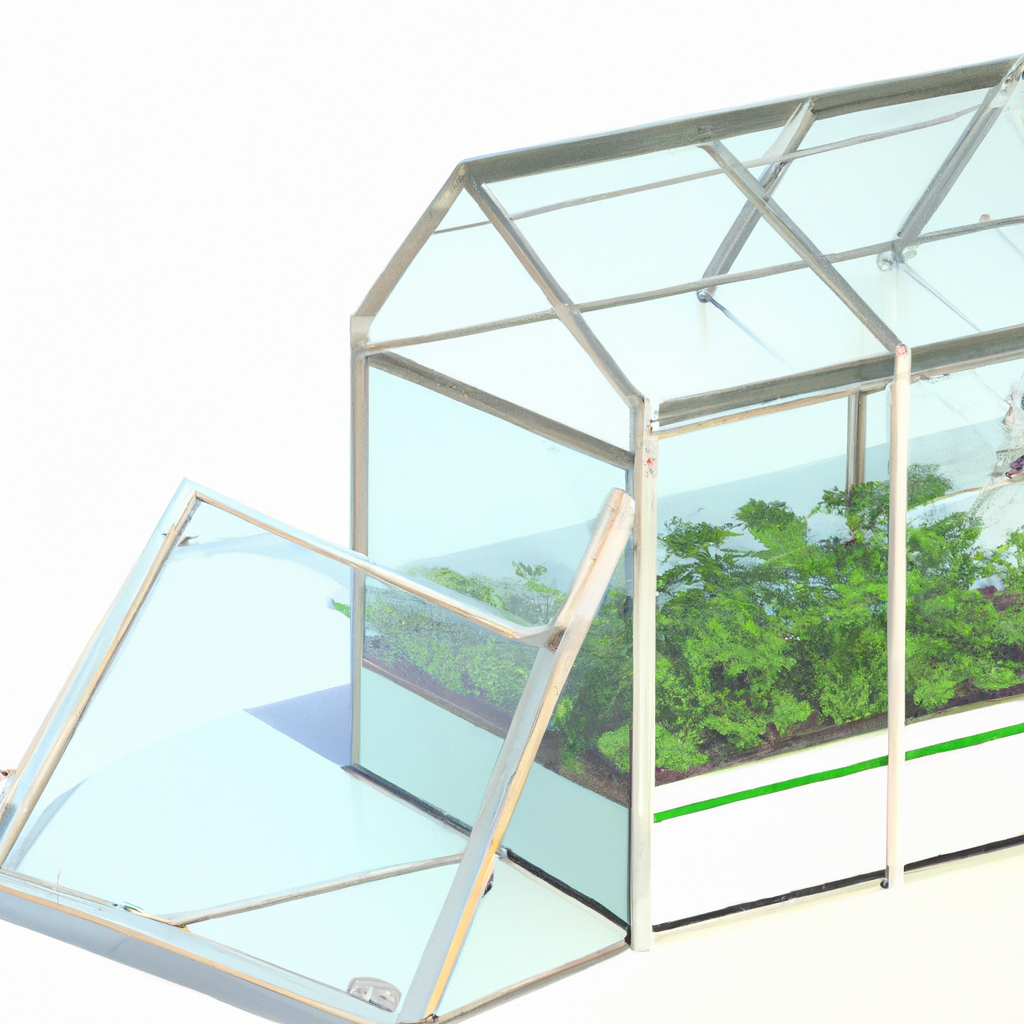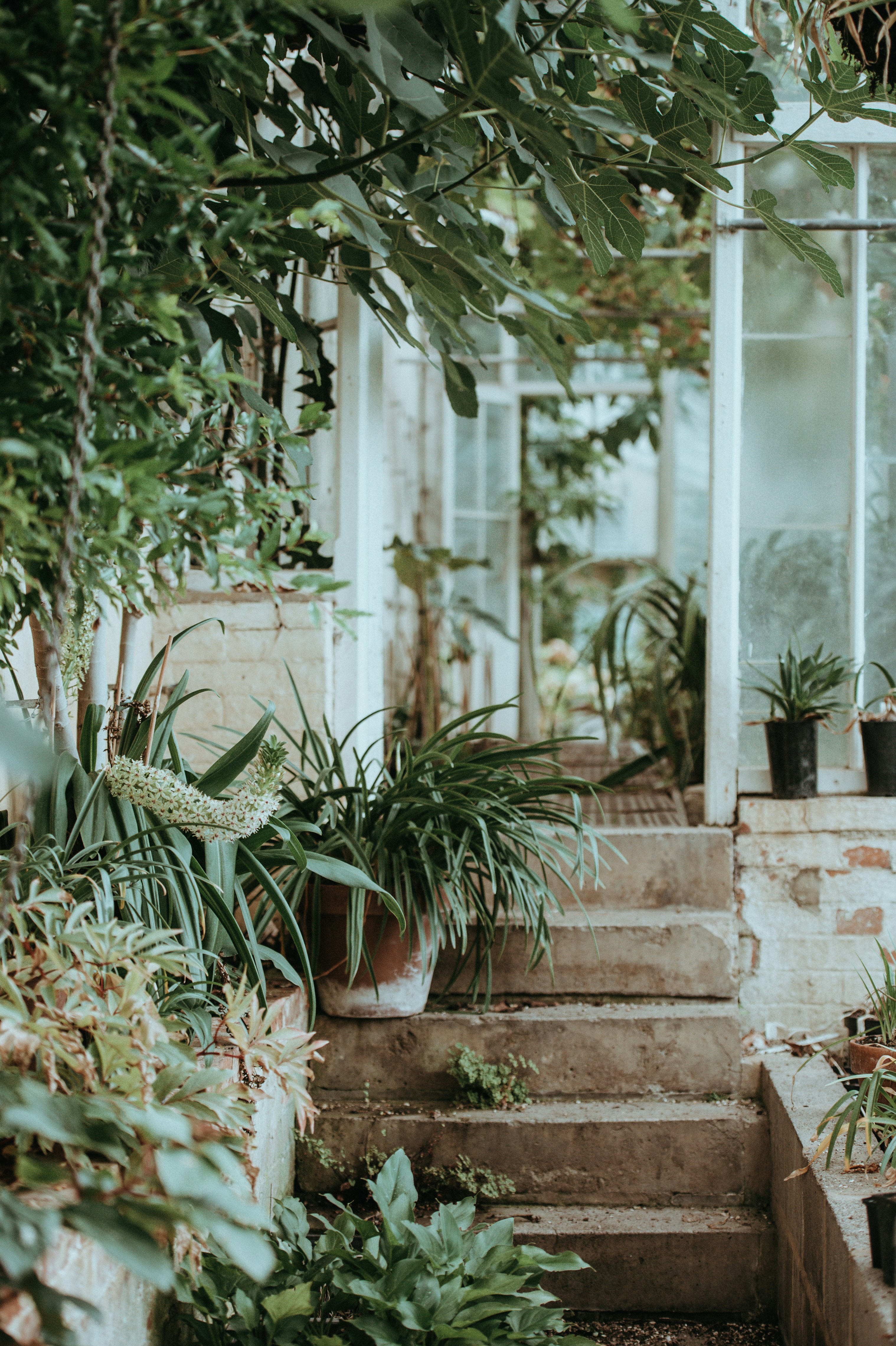
Condensation in a greenhouse can lead to a range of problems, from damage to plants to the spread of diseases. That’s why it’s important to find effective ways to prevent condensation. In this article, we will explore some simple and practical strategies that you can implement to keep your greenhouse dry and free from moisture build-up. With these tips, you’ll be able to maintain a healthy environment for your plants, ensuring their growth and productivity. So, let’s discover how you can bid farewell to condensation and welcome a thriving greenhouse!
Choose the right location
Consider the orientation
When choosing a location for your greenhouse, it is important to consider its orientation. Ideally, the greenhouse should be positioned in a way that allows the most sunlight exposure throughout the day. This means placing it facing south in the northern hemisphere or north in the southern hemisphere. By maximizing sunlight exposure, you can help prevent excessive condensation by ensuring proper air circulation and temperature regulation.
Ensure proper ventilation
Proper ventilation is crucial in preventing condensation in your greenhouse. Good air circulation helps to distribute heat evenly and control humidity levels. Make sure your greenhouse has vents or windows that can be opened to allow for fresh air to enter and humid air to escape. This can be especially important during warmer months when condensation tends to be more prevalent.
Avoid low-lying areas
Choosing a location for your greenhouse in a low-lying area can contribute to increased condensation. Low-lying areas are more prone to moisture accumulation, which can lead to condensation issues. It is best to select a location that is on higher ground to avoid this problem.
Install proper insulation
Use double-layered polyethylene film
Insulating your greenhouse can significantly reduce condensation. One effective method is to use a double-layered polyethylene film on the walls and roof of your greenhouse. This type of film helps to prevent heat loss and maintain a more consistent temperature inside the greenhouse, reducing the likelihood of condensation forming.
Opt for foam insulation panels
Another option for insulation is to use foam insulation panels. These panels can be placed on the walls and ceiling of your greenhouse to provide an extra layer of insulation. Foam insulation panels can help regulate the temperature inside the greenhouse and minimize condensation by reducing temperature fluctuations.
Install bubble wrap
An affordable and effective way to insulate your greenhouse is by using bubble wrap. This commonly available material can be applied to the windows and walls of the greenhouse to provide additional insulation. Bubble wrap acts as a barrier, preventing heat loss and reducing the chances of condensation forming.
Utilize thermal screens
Thermal screens are another option for greenhouse insulation. These screens can be installed inside the greenhouse and act as an additional layer of insulation by reducing heat loss. Thermal screens also help to distribute light more evenly throughout the greenhouse, promoting plant growth and minimizing condensation.

This image is property of images.unsplash.com.
Maintain optimal temperature and humidity levels
Monitor and regulate temperature
Maintaining a consistent temperature inside your greenhouse is key to preventing condensation. Use a thermometer to regularly monitor the temperature and make adjustments if necessary. A comfortable temperature for most plants is around 70-80°F (21-27°C). Avoid extreme fluctuations in temperature, as this can contribute to condensation issues.
Use heaters or fans
During colder months, you may need to provide supplemental heat to maintain optimal temperatures. Portable heaters or heating systems specifically designed for greenhouses can help regulate the temperature and prevent condensation caused by cold temperatures. In warmer months, using fans to circulate air can help regulate temperature and prevent excess humidity.
Install a dehumidifier
If you struggle with high humidity levels in your greenhouse, installing a dehumidifier can be beneficial in preventing condensation. Dehumidifiers remove excess moisture from the air, reducing the chances of condensation forming on surfaces. Be sure to choose a dehumidifier suitable for the size of your greenhouse and follow the manufacturer’s instructions for optimal usage.
Implement proper watering techniques
Proper watering techniques can also contribute to maintaining optimal humidity levels in your greenhouse. Avoid overwatering, as excessive moisture in the soil can increase humidity levels in the air. Instead, water plants in the morning to allow excess moisture to evaporate throughout the day. This can help prevent condensation by reducing humidity levels.
Promote airflow
Install vents
Installing vents in your greenhouse is crucial for promoting airflow and preventing condensation. Vents allow fresh air to enter and humid air to escape, helping to regulate temperature and humidity levels. Place vents strategically to create a proper air circulation pattern within the greenhouse and minimize condensation.
Use fans for circulation
To further promote airflow, consider using fans inside your greenhouse. Fans help distribute air throughout the space, preventing stagnant air pockets that can contribute to condensation. Position fans strategically to ensure proper airflow and minimize the chances of moisture buildup.
Create air channels
Creating air channels within your greenhouse can aid in proper airflow and reduce condensation. These channels can be created by leaving gaps between greenhouse benches or using mesh between plants. Air channels help prevent stagnant air and encourage air movement, preventing excessive moisture buildup.
Employ exhaust fans
Exhaust fans are another useful tool for promoting airflow and reducing condensation. These fans help remove humid air from within the greenhouse by pushing it out through designated vents. By removing humid air, exhaust fans contribute to maintaining optimal humidity levels and preventing condensation.
This image is property of images.unsplash.com.
Implement proper watering techniques
Water plants in the morning
Watering your plants in the morning is a simple yet effective technique to prevent condensation. By watering in the morning, you allow excess moisture to evaporate throughout the day, reducing humidity levels within the greenhouse. This practice helps maintain optimal humidity levels and minimizes the chances of condensation forming.
Avoid overwatering
Overwatering can contribute to excessive humidity levels in your greenhouse, leading to condensation. Make sure to water your plants only when necessary and avoid saturating the soil. Pay attention to the specific watering needs of each plant, as different species have varying requirements.
Use a drip irrigation system
A drip irrigation system is an efficient way to water your plants without contributing to excessive humidity levels. This system delivers water directly to the base of each plant, minimizing water waste and reducing the overall humidity in the greenhouse. Drip irrigation can help prevent condensation while ensuring adequate watering for your plants.
Utilize bottom watering
Bottom watering is a technique where plants are watered from the bottom through a tray or reservoir. This method minimizes moisture on the leaves and soil surface, reducing the chances of condensation. Bottom watering is especially useful for plants that are sensitive to excess moisture.
Control soil moisture
Use well-draining soil
Planting your greenhouse with well-draining soil can help prevent excessive moisture buildup, which can lead to condensation. Well-draining soil allows excess water to flow away from plant roots, reducing the overall humidity in the greenhouse. Use a mixture of quality potting soil and organic matter to promote good drainage.
Apply mulch
Applying a layer of organic mulch to the soil surface can help regulate soil moisture levels and prevent condensation. Mulch acts as a barrier, reducing evaporation from the soil surface and minimizing moisture buildup. Choose a mulch material that suits your plants and greenhouse environment, such as straw, wood chips, or gravel.
Avoid excessive watering
Overwatering is a common cause of excessive moisture in the soil, which can contribute to condensation. Avoid watering your plants more than necessary and pay attention to their individual watering needs. Perform regular checks to ensure the soil is not becoming waterlogged, which can lead to increased humidity in the greenhouse.
Implement a watering schedule
Establishing a watering schedule can help control soil moisture and prevent condensation. By watering your plants according to a set schedule, you can maintain consistent soil moisture levels and minimize the chances of excessive humidity in the greenhouse. Consider factors such as plant type, weather conditions, and individual plant needs when developing your watering schedule.

This image is property of images.unsplash.com.
Utilize shading techniques
Install shade cloth
Installing shade cloth in your greenhouse is an effective way to reduce direct sunlight exposure and control temperature and humidity levels. Shade cloth can be attached to the top or sides of the greenhouse to provide shade for your plants. By reducing intense sunlight and heat, shade cloth helps prevent excessive moisture buildup and condensation.
Plant shade-giving trees or tall crops
Another way to naturally provide shade in your greenhouse is by planting shade-giving trees or tall crops around the perimeter. These plants can help reduce excessive sunlight exposure, creating a more balanced environment with controlled temperature and humidity levels. Choose shade-loving species that thrive in your area for optimal results.
Use shade paint or film
If installing shade cloth or planting shade-giving trees is not feasible, you can consider using shade paint or film on the greenhouse windows. These products reduce the amount of sunlight entering the greenhouse, preventing excessive heat buildup and reducing the chances of condensation. Follow the manufacturer’s instructions for proper application and maintenance.
Introduce air circulation methods
Use horizontal air circulation fans
Horizontal air circulation fans can greatly improve airflow within your greenhouse and prevent condensation. These fans are typically mounted on the walls or ceiling and move air horizontally, ensuring even distribution of temperature and humidity. By promoting air circulation, horizontal fans help prevent stagnant air and excessive moisture buildup.
Install vertical air circulation fans
Vertical air circulation fans are another effective tool for promoting airflow and reducing condensation in your greenhouse. These fans are mounted higher up on the walls or ceiling and move air vertically, complementing the airflow created by horizontal fans. Vertical fans enhance air circulation, preventing stagnant pockets of air and minimizing condensation.
Position fans strategically
When installing air circulation fans, it is important to position them strategically for optimal effectiveness. Place fans in areas where air movement is limited, such as corners or near plants with dense foliage. Experiment with different fan placements to achieve the desired airflow and minimize condensation.

Consider the greenhouse structure
Choose appropriate materials
The choice of materials for your greenhouse can impact condensation levels. Insulated materials, such as double-layered glass or polycarbonate panels, can help regulate temperature and minimize condensation. These materials provide better insulation compared to traditional single-pane glass, reducing temperature fluctuations and condensation issues.
Install an insulated foundation
Properly insulating the foundation of your greenhouse is important in preventing condensation. A well-insulated foundation helps maintain a more consistent temperature inside the greenhouse and reduces the potential for moisture buildup. Choose materials such as foam insulation or insulated concrete to provide a barrier against temperature fluctuations.
Ensure tight seals
To prevent condensation, it is essential to ensure that your greenhouse has tight seals on doors, windows, and vents. Poorly sealed areas can allow moisture and cold air to enter the greenhouse, leading to condensation. Regularly inspect and maintain seals, replacing any damaged or worn-out parts to maintain proper insulation and prevent unwanted moisture buildup.
Employ anti-condensation coatings
Another option to consider is applying anti-condensation coatings to the greenhouse structure. These coatings, typically in the form of sprays or paints, create a surface that resists condensation formation. Anti-condensation coatings can be applied to glass, polycarbonate, or other greenhouse materials to minimize moisture buildup and prevent condensation.
Monitor and control pests and diseases
Maintain good hygiene
Maintaining good hygiene practices in your greenhouse can contribute to preventing the spread of pests and diseases, which can worsen condensation issues. Regularly clean the greenhouse, removing any dead plant material, weeds, or debris. Keep tools and equipment clean, and disinfect them between uses to prevent the transfer of pests or diseases.
Implement integrated pest management
Integrated pest management (IPM) is a holistic approach to controlling pests and diseases in a greenhouse. This method focuses on prevention, monitoring, and intervention using a combination of cultural, biological, and chemical control strategies. By effectively managing pest and disease populations, you can minimize stress on plants and reduce the likelihood of condensation issues.
Regularly inspect plants
Regularly inspecting plants in your greenhouse is essential for detecting and addressing any pest or disease issues promptly. Look for signs of infestation or infection, such as wilting leaves, discoloration, or unusual growth patterns. By identifying and treating these issues early on, you can prevent them from spreading and potentially exacerbating condensation problems.
Address pest and disease issues promptly
If you do identify pests or diseases in your greenhouse, it is crucial to take prompt action to control and eliminate them. Depending on the severity of the infestation or infection, treatment methods may include biological controls, organic pesticides, or chemical treatments. Swift intervention can help prevent the excessive moisture and stress on plants that often accompany pest and disease problems, minimizing the chances of condensation forming.
By following these effective methods to prevent condensation in your greenhouse, you can create a healthier and more productive environment for your plants. Remember to consider factors such as location, insulation, temperature, airflow, watering techniques, shading, greenhouse structure, and pest and disease control. With proper attention and care, you can enjoy a condensation-free greenhouse and cultivate thriving plants all year round.



